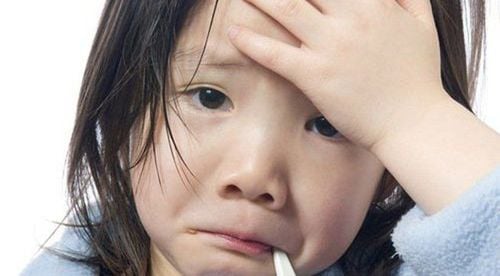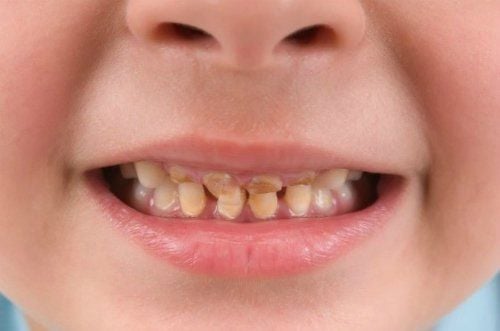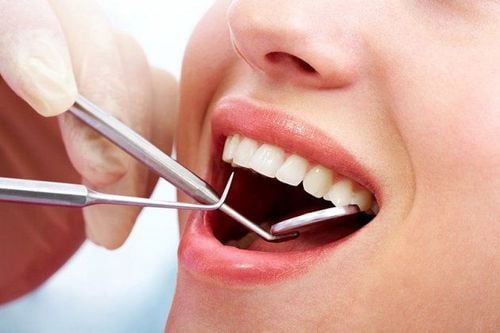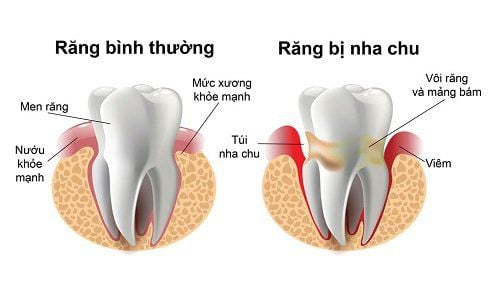This is an automatically translated article.
The article was professionally consulted with Master, Doctor Ngo Thi Oanh - Pediatrician - Department of Pediatrics - Neonatology - Vinmec Ha Long International General Hospital.Gingivitis in children is a seemingly simple but very dangerous disease, especially at the age of weaning. Therefore, parents need to monitor and detect oral disease in children at the earliest and have timely treatment.
1. Gingivitis in weaning babies
Children at the age of weaning are very susceptible to dental diseases, in which gingivitis is common. Children with pus-filled gums, fever, or mouth sores are telltale signs of this condition.Gums are the software system that surrounds the roots of teeth. Gingivitis or gingivitis in children is an infection of the tissues around the teeth and does not affect the periodontal system such as the alveolar bone, periodontal ligament and root cementum.
When inflamed, the gums will swell and hurt, turning from light pink to red or blue-gray. The surface of the gums becomes smooth, losing the orange patches. Gums bleed easily when brushing or examining, more severe can cause spontaneous bleeding.
2. Why are children prone to gingivitis?
The main reason is that children do not have regular and proper oral hygiene. Children are not able to clean themselves with food particles or stains that have been stuck for a long time on the surface of the teeth as well as in the interdental spaces. This causes bacteria to hide in the tartar plaque causing gingivitis.Especially in teething babies, the gums are very sensitive and vulnerable, so bacteria will be more susceptible to attack.
In addition, other causes such as poor nutritional status, children with fever due to systemic diseases, taking anti-epileptic drugs, ... are also the causes of gingivitis in children, affecting the health of children. infant oral health.
3. Symptoms of gingivitis in children
Depending on the location and condition of the child's disease, the symptoms will appear different:Children with swollen gums with pus: At this early stage of development, children still eat and play normally without any symptoms. any discomfort. All signs are at an early stage, only when parents pay close attention can they see that the gums change from pink to red.
Parents can recognize gingivitis in children through the phenomenon of bleeding gums when brushing teeth. Bleeding gums are caused by bacteria that produce toxins, which make the gums sensitive and easy to bleed.
Children with gingivitis and fever: This is a noticeable sign in young children when they have gingivitis. The child will be fussy, refuse to eat or eat because of the dull pain from deep in the teeth. The child's gums are swollen and enlarged, turning crimson that the naked eye will immediately see the abnormality.

Trẻ bị sốt là dấu hiệu dễ nhận thấy ở trẻ nhỏ khi bị viêm lợi
Children with gingivitis often have anorexia, eat less or skip meals due to sharp pain in the gums, there may be a bad smell in the mouth if the inflammation festers. This will seriously affect the health of the baby.
4. Prevention of gingivitis in children
To help children prevent tooth and gum damage from gingivitis, parents need to be aware of their children's oral care from an early age:Teach children good oral hygiene habits after eat. Clean your teeth daily, gargle with salt water and take medicine as directed by your doctor. When the root of the tooth is painful, it should be checked and treated early. Give children soft foods that are easy to chew, do not eat hot spicy foods; Children should go to the doctor to get tartar (calcium) periodically every 3 months. Filling and orthodontics if there is a deviation and treating the underlying pathology if any; Limit children's thumb sucking, nail biting, toothpicks. For infants and toddlers, more careful care is needed from parents by:
Clean baby's teeth after feeding by using gauze wrapped around his index finger dipped in water Boil to cool, rub baby's teeth and gums. This movement must be done very gently to avoid damage to the oral mucosa and avoid making the baby nauseous; Avoid giving your baby a bottle and sucking on a pacifier with a hard nipple will hurt your baby's gums. Parents should not mix too hot milk will hurt the baby's gums. Cleaning and disinfecting the newborn's belongings; For children who are in the period of teething, because baby teeth will fall out, they still have a great influence on the permanent teeth that will grow later. Therefore, it is very important to keep baby teeth clean to create the foundation for permanent teeth to erupt regularly. Parents should plan and spend time taking their children to see the dentist regularly, maybe every 3 - 6 months to best check for dental problems. Absolutely do not let the baby's diseases become serious to bring to the clinic.
Please dial HOTLINE for more information or register for an appointment HERE. Download MyVinmec app to make appointments faster and to manage your bookings easily.













